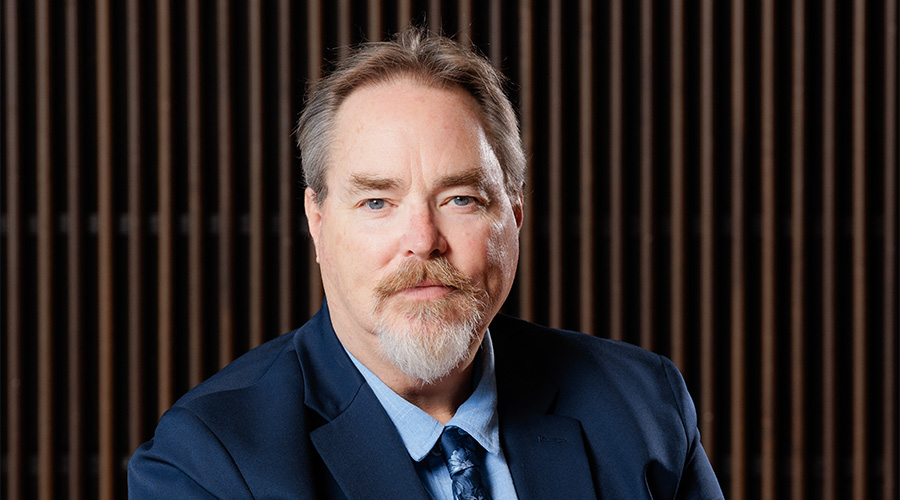Solid Metrics Pave Road to Credibility
By Brandon Lorenz, Senior Editor
With CFOs dividing time between business units, getting an audience with upper management is no easy task, much less getting new projects approved. When facility decisions are contemplated at The Vanguard Group, however, the facility department isn’t sailing solo. Facility performance is discussed regularly when Robert Gross, principal for facilities management, meets each month with the company’s CFO.
Why is Gross able to get so much of the CFO’s time? Metrics. He has gained credibility by using data to guide and justify facility decisions. What’s more, when Gross talks about the performance of the facility organization, the metrics he uses are in a similar format to the company’s other business units, making it easier for the CFO to see how the department is performing. “The more clearly you can present the data, the more credibility that data has and the easier it is to discuss,” Gross says.
Nothing Succeeds Like Success
Few things build credibility faster than keeping operating expenses under control, but unless the success can be easily demonstrated, facility executives are likely to go unrecognized for their performance. Having an appropriate metric is especially important when justifying upgrades to reduce facility operating costs.
Clayton Crawford, director of facilities operations and office services at McKesson, saw a substantial opportunity for energy cost savings from lighting retrofits. The problem was that potential energy cost savings seemed too small to financial decision-makers to have a significant impact on the bottom line. Having come from the finance department, Crawford knew he had to find the right metric to make a convincing case.
“It’s crucial that facility executives put themselves in the shoes of finance, because ultimately that’s who controls the purse strings,” Crawford says. His solution was to report savings as a multiple of sales — in other words, how many dollars of additional sales it would take to equal the impact on the bottom line of $1 of energy savings. Crawford calculated the multiple of sales to be 70: $1 of energy cost savings had the same bottom-line value as $70 in new sales.
Now, when Crawford proposes lighting upgrades, he gets a quick answer: “Let’s do it.”
Another way to build credibility is to show that facility projects have an effect on metrics important to the organization. A widely used measure of customer satisfaction in the health care industry is the Press Ganey survey of discharged patients. One area the survey examines is the physical environment. Robert Falaguerra, system vice president of facilities, support services and construction, Saint Francis Hospital and Medical Center, Hartford, Conn., has tracked scores before and after upgrading units in the hospital.
“Scores have gone up 25 percent,” he says. “That’s very significant. We have shown that when there is dissatisfaction on the floor, it’s partially a result of the environment. When you fix the environment, it tends to improve the score.” Being able to document the impact of facility upgrades helped Falaguerra win funding for other projects.
It’s not uncommon to see Press Ganey scores rise immediately following a renovation of a space — or to see them begin to drop not too long after the work is finished. Nevertheless, the scores generally stabilize at a higher level than where they began.
Building on Achievements
Once they have established credibility, facility executives can leverage past successes to present more ambitious projects to their CFOs, provided they have the data to back up their request. “When you present your project or your business opportunity with sound data, your credibility goes up quite a bit,” says Don King, director for Kaiser Permanente’s maintenance operations consulting services. “No one is going to give you the benefit of the doubt without that data and that business case.”
But what about facility executives who are still trying to build a relationship with the CFO? Completing projects that meet targets for such key performance indicators as schedule, budget and quality will get noticed, says John Harrod, physical plant director, University of Wisconsin – Madison. “When you keep the customer base satisfied, it is able to support you when discussions about budgets go to the top.”
Another option is to find ways to aid the business units. For John Balzer, vice president for planning and development for Milwaukee’s Froedtert Hospital, that means working with their metrics.
Staff turnover is a common problem in health care. To monitor the issue, Froedtert surveys employees annually and compares the responses to each department’s turnover rate. If turnover is high, a variety of factors is considered, including the facility. Those surveys were used to guide the design of a break room in a new cancer facility. The room has two walls of windows and a view of a natural area. In the past, that room would have been designated for patient use, Balzer says.
Simply sharing relevant information is one way to build credibility with business units.
Consider business units that are charged for moving costs. One approach is to track the information and let the data speak for itself, Gross says. “If churn really starts to take off, we are going to have a meeting with that business unit,” he says. “We’re going to find out whether it’s legitimate or not and we’re going to share with them what the costs of doing that move are.”
Customer satisfaction surveys can be another way to build credibility — provided the surveys are acted upon. “If you are just requesting surveys but not being visible in reacting to them, soliciting feedback doesn’t do anything at all,” says Gross. “But if you are attentive, it certainly improves your credibility and visibility.”
How It’s Done: Building A Metric
| |
Metric |
Customer satisfaction |
|
| |
Identify Purpose |
Measure customer perception of service delivery |
|
| |
Decide Data
to Include |
Ratings for the question “Overall Rating of Services Provided” on the national facilities services standard customer satisfaction survey. Customers are defined as managers and other key stakeholders who occupy supported facilities. |
|
| |
Decide Data
to Exclude |
Ratings for other elements of the survey (though these will be used for planning to improve customer satisfaction) |
|
| |
Define Calculation |
• Number of respondents rating overall performance as “very good” and “excellent” divided by the total number of respondents*
• Number of respondents rating overall performance as “good,” “very good” and “excellent” divided by the total number of respondents* |
|
| |
Frequency & Audience |
• Annually
• Facility directors, facility managers, operations support leaders, hub directors, national facilities services consultants, service vendors |
|
| |
Actions That Might Be Taken |
• Assess impacts of modified service levels and cost containment activities
• Develop action plans to improve customer satisfaction |
* Decision of which one to use made by the California Division Facilities Director Peer Group
Adapted from material provided by Kaiser Permanente National Facilities Services
|
HOW WE DEVELOP AND USE METRICS:
Related Topics:











